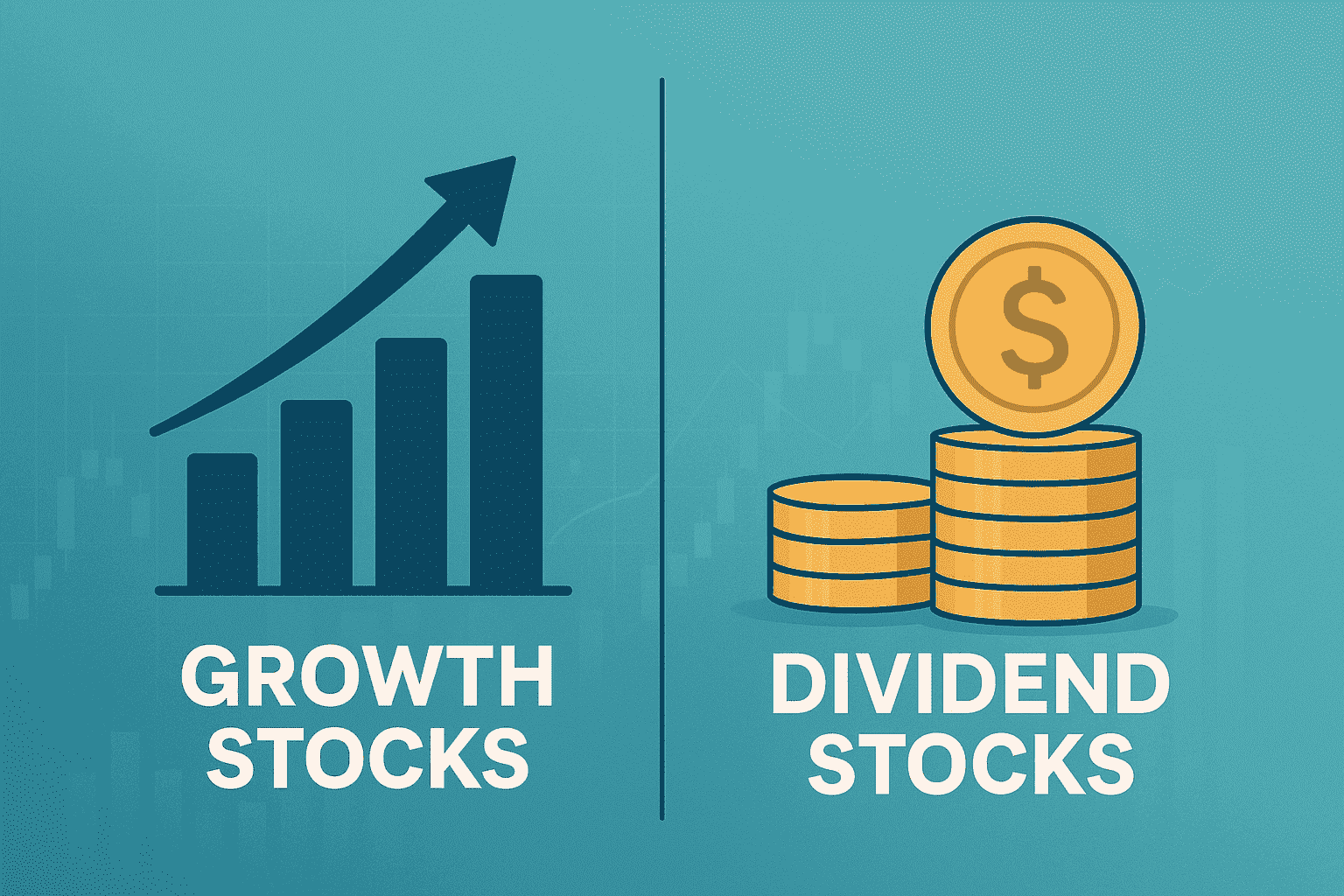Business
Unveiling the Secrets of Dow Jones: What Every Investor Should Know

Introduction to the Dow Jones Industrial Average (DJIA)
Welcome to the exhilarating world of investments, where fortunes can be made and dreams can come true. As an aspiring investor or seasoned financial guru, you’ve probably heard whispers about the Dow Jones Industrial Average, commonly referred to as the DJIA. But what exactly is this mystical-sounding index that holds so much sway over the global markets? Get ready to uncover its secrets and arm yourself with invaluable knowledge that every investor should possess.
The Dow Jones Industrial Average (DJIA) is a renowned stock market index that serves as a barometer for the overall performance of the U.
S. stock market. It’s like a compass guiding investors through turbulent waters, offering insights into prevailing trends and predicting potential opportunities or risks ahead. This fascinating index has been instrumental in shaping investment strategies since its inception back in 1896.
So, grab your magnifying glass and let’s embark on a historical journey to unravel how this influential benchmark came into existence. From humble beginnings to becoming one of the most widely followed indicators worldwide, we’ll explore its evolution throughout history and witness firsthand how it has adapted to modern times.
History and Evolution of the Dow Jones
The history and evolution of the Dow Jones is a fascinating journey that spans over a century. It all began in 1884 when Charles Dow, along with his business partner Edward Jones, founded the company that would eventually become the Dow Jones & Company. Their vision was to create an index that would track the performance of leading industrial companies in the United States.
In May 1896, they launched their flagship index, known as the Dow Jones Industrial Average (DJIA). At its inception, it consisted of just 12 stocks representing various industries such as railroads, cotton mills, sugar companies, and tobacco manufacturers. The purpose was to provide investors with a snapshot of how these key sectors were performing.
Over time, as the economy grew and new industries emerged, so did the composition of the DJIA. Today, it consists of 30 blue-chip companies across various sectors including technology giants like Apple and Microsoft, financial institutions like JPMorgan Chase and Goldman Sachs.
Throughout its evolution, one thing has remained constant –the ability of the DJIA to serve as a barometer for overall market conditions. Investors have come to rely on its movements as an indicator of economic health or potential risks.
How the DJIA is Calculated
Understanding how the Dow Jones Industrial Average (DJIA) is calculated can provide valuable insights into the dynamics of this widely followed index. The DJIA is a price-weighted average, which means that it gives more weight to higher-priced stocks. To calculate the index, the prices of 30 major U.
S. stocks are added together and divided by a divisor.
The divisor is used to maintain continuity when there are stock splits, dividends, or other corporate actions that may impact the price of a component stock. This ensures that changes in individual stock prices do not disproportionately affect the overall index value.
The calculation method used for the DJIA has its advantages and disadvantages. On one hand, it provides a simple way to track market trends and gauge investor sentiment. However, critics argue that it fails to accurately represent broader market performance due to its narrow focus on just 30 large-cap stocks.
Investors should keep in mind that while the DJIA can be helpful for tracking general market movements, it may not be as comprehensive as other indexes like the S&P 500 or Russell 2000.
Understanding how the DJIA is calculated can give investors important context when interpreting its movements. While it has limitations as an investment tool, it remains an influential benchmark in financial markets worldwide.
Understanding the Components of the DJIA
Understanding the Components of the DJIA
The Dow Jones Industrial Average (DJIA), commonly referred to as “the Dow,” is made up of 30 large, publicly traded companies. These companies are carefully selected by the editors of The Wall Street Journal and are meant to represent a broad range of industries in the U.
S. economy.
So, who exactly makes it onto this prestigious list? Well, some familiar names you might recognize include Apple, Microsoft, Boeing, and Coca-Cola. These companies have proven themselves to be leaders in their respective fields and have a significant impact on the overall stock market.
However, it’s important to note that being included in the DJIA doesn’t necessarily mean a company is performing well financially. Rather, it serves as an indicator of market trends and investor sentiment towards these particular stocks.
As an investor, understanding which companies make up the DJIA can provide valuable insights into current market conditions. By analyzing how these individual stocks perform over time, you can gain a better understanding of broader economic trends and potentially make informed investment decisions.
It’s worth mentioning that changes to the components of the DJIA do occur from time to time. Companies may be replaced if they become less representative of their industry or if they experience financial difficulties.
Impact of Market Trends on the DJIA
The Dow Jones Industrial Average (DJIA), often referred to simply as the Dow, is not immune to the influence of market trends. In fact, it is highly sensitive to shifts in investor sentiment and broader economic conditions.
When positive market trends prevail, such as strong corporate earnings reports or optimistic economic data, the DJIA tends to rise. This can be attributed to increased confidence among investors, leading them to buy stocks and push prices higher. Conversely, during periods of negative market trends like recession fears or geopolitical tensions, the DJIA may experience declines as investors become more risk-averse and sell off their holdings.
It’s important for investors to understand that while the DJIA provides a snapshot of overall market performance, its movement is influenced by a relatively small number of large-cap stocks. Therefore, changes in these individual companies can have a significant impact on the index as a whole.
Additionally, global events and macroeconomic factors also play a role in shaping market trends that ultimately affect the DJIA. Factors such as interest rate decisions by central banks or trade disputes between nations can sway investor sentiment and subsequently impact stock prices within the index.
In conclusion,
investors should keep a close eye on various market indicators
in addition to monitoring
the movements of
the DJIA alone. By considering multiple sources of information,
they can gain comprehensive insights into
market trends that could potentially affect their investment portfolios.
How to Use the DJIA as an Investment Tool
When it comes to using the Dow Jones Industrial Average (DJIA) as an investment tool, there are several strategies and approaches that investors can consider. One way to utilize the DJIA is by tracking its performance over time and identifying trends or patterns that may indicate potential opportunities for buying or selling stocks.
By monitoring the movements of individual companies within the index, investors can gain insights into broader market trends and make informed decisions about their portfolios. For example, if a particular industry or sector is experiencing growth, it may be worth exploring investments in related companies.
Another strategy is to use the DJIA as a benchmark for evaluating the performance of your own investments. By comparing your portfolio’s returns against those of the index, you can assess how well your investments are performing relative to the overall market.
Additionally, investors can leverage exchange-traded funds (ETFs) that track the DJIA. These funds allow individuals to gain exposure to all 30 stocks in one convenient investment vehicle.
It’s important to note that while using the DJIA as an investment tool has its benefits, it also has limitations. The index only includes 30 large-cap companies and does not represent every sector of the economy. Therefore, relying solely on this index may not provide a comprehensive view of market conditions.
Risks and Limitations of Using the DJIA
Risks and Limitations of Using the DJIA
While the Dow Jones Industrial Average (DJIA) has been a popular tool for investors, it’s important to be aware of its risks and limitations. One key risk is that the DJIA only includes 30 large-cap stocks, which may not represent the overall market accurately. This limited sample size can lead to skewed results and misinterpretation of market trends.
Another limitation is that the DJIA is price-weighted, meaning that stocks with higher prices have a greater impact on the index’s movement. This can lead to an overemphasis on certain companies’ performance, potentially distorting the overall picture.
Additionally, changes in stock composition within the DJIA can also create challenges. When a company is removed from or added to the index, it can cause sudden fluctuations in its value as investors adjust their portfolios accordingly.
Furthermore, relying solely on DJIA data may overlook other important factors such as sector-specific trends or global economic indicators that could affect investment decisions.
It’s crucial to understand that past performance does not guarantee future results. The historical success of companies included in the index does not necessarily indicate continued growth or stability.
In conclusion…
While using the Dow Jones Industrial Average as an investment tool can provide valuable insights into market trends and investor sentiment, it’s essential for investors to consider its limitations and use additional indicators for a more comprehensive analysis.
Alternatives to the DJIA for Investors
Alternatives to the DJIA for Investors
While the Dow Jones Industrial Average (DJIA) is one of the most widely recognized stock market indexes, there are several alternatives that investors can consider when building their portfolios. These alternative indices provide different perspectives on the market and may be better suited to certain investment strategies.
One popular alternative is the S&P 500 index, which tracks the performance of 500 large-cap stocks across various sectors. The S&P 500 offers a broader representation of the U.
S. stock market compared to the DJIA’s focus on just 30 companies. This diversity can provide investors with a more comprehensive view and potentially reduce risk.
Another option is the Nasdaq Composite Index, which includes over 3,000 stocks listed on the Nasdaq exchange. It primarily represents technology-related companies and has historically shown strong growth potential. For those interested in investing in this sector specifically, Nasdaq could be an attractive alternative.
Investors looking for global exposure might consider indices like MSCI World or FTSE All-World Index. These benchmarks include thousands of stocks from around the world and offer a broader perspective on international markets.
For those focused on specific industries or themes, there are also specialized indices available. Examples include biotechnology-focused indices like NASDAQ Biotechnology Index or clean energy-focused ones like Wilder Hill Clean Energy Index.
It’s important to note that each alternative index has its own methodology and weighting criteria. Therefore, it’s crucial for investors to understand these differences before making any investment decisions.
In conclusion,
While many investors rely on the Dow Jones Industrial Average as a benchmark for their investments, it’s essential not to limit oneself solely to this index. Exploring other alternatives such as S&P 500, Nasdaq Composite Index, MSCI World or industry-specific indices can provide additional insights into different segments of the market and potentially enhance portfolio diversification strategies
Conclusion
Conclusion
The Dow Jones Industrial Average (DJIA) has a rich history and is considered one of the most influential stock market indexes in the world. Understanding how it works and its limitations can be valuable for investors looking to make informed decisions.
Throughout this article, we explored the origins of the DJIA and how it has evolved over time. We also delved into the intricacies of calculating the index and understanding its components.
We discussed how market trends can impact the performance of the DJIA, highlighting its role as a barometer for overall market health. Additionally, we explored how investors can use this index as a tool to gain insights into specific industries or sectors.
However, it’s important to recognize that relying solely on the DJIA may have some risks and limitations. The limited number of stocks included in the index may not fully represent all sectors or companies in the market. Furthermore, price-weighted indexing methodology may skew results and overlook factors such as company size or fundamentals.
Business
The Troubling Phenomenon of Pastors Selling Land in Heaven: Faith, Money, and Accountability

In a world where faith communities often rely on trusted spiritual leaders, reports of pastors promising heavenly real estate in exchange for donations or purchases have emerged with unsettling frequency. The notion of “selling land in heaven” is not just a quaint parable turned sales pitch; it touches on theology, ethics, church governance, and the vulnerable finances of believers. This article examines the phenomenon from multiple angles: how it happens, why it resonates for some, the risks involved, and practical ways to protect congregants and promote accountability.
What It Means to “Sell Land in Heaven”
Defining the Core Idea
- The phrase often describes attempts by a religious leader to monetize spiritual promises by claiming that donations, purchases, or specific financial acts will secure a tangible reward in the afterlife.
- Common patterns include:
- Promises of wealth, health, or favor in return for large gifts or “seed money.”
- Taxing or labeling certain donations as “spiritual investments” that guarantee heavenly returns.
- Framing ongoing financial commitments as foundational to personal salvation or community blessing.
The Theology Some Use to Justify It
- The practice draws on misinterpretations of prosperity gospel, indulgences, or ritualized acts of giving as merit-based currency.
- In some cases, leaders use persuasive rhetoric about spiritual capitalism: “Heaven’s inventory is stocked by your generosity today.”
Distinguishing Between Generous Giving and Exploitative Claims
- Healthy church giving often arises from voluntary, informed giving tied to transparent budgeting and mission-focused needs.
- Exploitative pitches tend to:
- Create a sense of coercion or isolation for those who cannot participate financially.
- Use fear-based language about sin, punishment, or divine withheld blessings.
- Offer vague or unverifiable “returns” that cannot be measured in tangible outcomes.
Why This Practice Persists
Psychological and Social Drivers
- Belonging and identity: For many, church affiliation provides community and purpose; compelling promises can reaffirm that belonging.
- Hope and agency: In uncertain times, people crave assurance. Promises of heavenly rewards can feel hopeful, even if unfounded.
- Authority and trust: Charismatic leaders wield influence; congregants may defer to perceived spiritual expertise.
Economic Incentives and Organizational Dynamics
- Revenue streams: Some churches rely on donations for operational viability, renovations, or ambitious programs.
- Longevity of leadership: In systems with centralized leadership, a single pastor’s vision (and finances) can dominate decision-making.
- Power dynamics: Financial control can translate into influence over congregants’ personal lives and choices.
The Ethical and Legal Landscape
Ethical Boundaries for Religious Leadership
- Most faith traditions emphasize stewardship, humility, and care for the vulnerable.
- Ethical concerns arise when faith is weaponized for financial gain, or when manipulation, coercion, or deception is used.
Legal and Regulatory Considerations
- In many jurisdictions, religious organizations enjoy certain tax exemptions. This status comes with accountability expectations, transparency requirements, and anti-fraud protections.
- Legal questions can arise around:
- Misrepresentation or fraud if promises imply monetary sales for heavenly outcomes.
- Consumer protection issues when individuals are marketed goods (even if intangible) under false pretenses.
- Nonprofit governance standards, including fiduciary duties, conflicts of interest, and financial disclosures.
Real-World Impacts: Consequences for Congregants
Financial Harm
- Congregants may deplete savings, incur debt, or forego essential expenses to meet donation targets.
- Wealth disparities can widen, with vulnerable members disproportionately affected.
Spiritual and Emotional Harm
- Trust erodes when promises fail or are revealed as transactional.
- Feelings of guilt, shame, or spiritual injury can linger long after a sermon.
Community Trust and Institutional Health
- Word spreads beyond a single church, affecting broader perceptions of religious institutions.
- Donor fatigue and skepticism can hinder legitimate fundraising and mission work.
Detecting and Responding to Exploitative Practices
Early Warning Signs
- Consistent use of “seed faith” language tied to specific monetary commitments.
- Pressure tactics: “If you love God, you will give…” or guilt-based messaging.
- Promises that prayer or sacrifice will guarantee specific, verifiable outcomes in heaven.
- Lack of transparency around finances, budgets, and how funds are used.
Practical Steps for Congregants
- Request transparent financial reporting: budget outlines, how donations are allocated, and measurable outcomes.
- Seek independent oversight: establish or support a finance committee with diverse leadership.
- Compare claims with core doctrine: consult multiple trusted theological sources to evaluate the claims.
- Practice informed giving: avoid pressure-filled decisions; take time to reflect and consult mentors or advisors.
Steps for Church Leadership and Governance
- Establish clear ethical guidelines: codify boundaries between spiritual leadership and financial solicitation.
- Build robust governance structures: independent treasurers, audit processes, and policies on conflicts of interest.
- Foster accountability culture: open forums, grievance mechanisms, and whistleblower protections.
- Prioritize education: equip congregants with media literacy and critical thinking about fundraising rhetoric.
Practical, Evidence-Based Alternatives to Faith-Based Real-World Costs
If a faith community seeks to support its mission without compromising ethical standards, here are constructive approaches:
- Transparent stewardship campaigns: clearly articulate needs, timelines, and outcomes; provide regular financial updates.
- Mission-driven fundraising: tie gifts to specific, auditable programs (e.g., scholarships, community services) with measurable impact.
- Membership-based budgeting: align programs with real, documented community needs and capacity, avoiding coercive tactics.
- Independent audits: annual external audits and published audit reports to build trust.
- Beneficiary-centered models: ensure programs prioritize the well-being and autonomy of those served, with consent and dignity at the forefront.
Case Studies: Lessons from the Field
Note: This section offers generalized, anonymized patterns to illustrate insights without naming specific individuals or churches.
- Case A: A growing church faced rapid expansion and instituted a bold “project seed” fundraiser. After initial enthusiasm, financial shortfalls and member complaints mounted. An external audit revealed a lack of budget transparency, leading to policy reforms and the creation of an independent oversight board.
- Case B: A pastors’ council implemented a transparent giving policy, separating spiritual messaging from financial pitches. The initiative included annual financial disclosures and a code of conduct, rebuilding trust among congregants.
- Case C: A denomination issued a ethics charter prohibiting fundraising practices that promise celestial benefits. The charter was accompanied by training on ethical stewardship and a clear complaint mechanism.
FAQs
- Is it illegal for a pastor to promise heaven in exchange for money?
- Legality varies by jurisdiction. Some practices may violate fraud or consumer protection laws, especially if misrepresentations are involved. Ethical concerns remain even if there isn’t a specific statute broken.
- How can I protect myself from exploitative fundraising in my church?
- Seek transparent financial information, ask questions about how funds are used, advocate for independent audits, and discuss concerns with trusted leaders or denomination authorities.
- What should I look for in a healthy church fundraising strategy?
- Clarity, consent, accountability, measured outcomes, and alignment with the mission. Fundraising should inform and empower, not coerce or promise guaranteed spiritual returns.
- How can churches balance generosity with ethical fundraising?
- Emphasize stewardship education, transparent budgets, and community-focused initiatives. Avoid language that implies guaranteed heavenly rewards tied to gifts.
- If I suspect fraud in a religious organization, what should I do?
- Document concerns, seek counsel from trusted advisors, and report to appropriate authorities or denominational oversight bodies. If there are imminent risks to individuals, contact local authorities.
- Are there positive models for faith-based fundraising?
- Yes. Models that prioritize transparency, accountability, and mission impact—such as project-based campaigns, matched giving, or endowments—toster trust and long-term sustainability.
- How can denominational bodies help prevent these practices?
- By issuing ethical guidelines, providing training, establishing independent audit mechanisms, and creating safe channels for reporting concerns.
Conclusion: Navigating Faith, Finance, and Integrity
The temptation to frame heavenly outcomes as commodities is powerful in some contexts. Yet the integrity of religious communities hinges on a careful balance between generosity and accountability. Faith leaders have a responsibility to shepherd communities with honesty, humility, and vigilance against the misuse of spiritual authority for financial gain. Congregants deserve transparency, respect, and opportunity to participate in decisions that affect their livelihoods and beliefs.
If you’re navigating a situation where a pastor or church seems to be monetizing heaven or making heaven a saleable commodity, you’re not alone. Start with questions, seek corroboration, and lean on governance mechanisms that prioritize the dignity and wellbeing of every member. By fostering transparent practices, ethical leadership, and accountable stewardship, religious communities can sustain their mission without compromising trust or faith.
More pages
The Art and Science of Pressure Washing: How Professional Services Revitalize Your Property
Business
Growth vs. Dividend: Where Should You Park Your Capital?

When considering long-term wealth creation, one of the early decisions in stock investing often revolves around this question: Should you prioritise capital appreciation or regular income? This is essentially the distinction between growth stocks and dividend stocks.
Both types of stocks serve different purposes and appeal to different investor profiles. In this blog, we will walk through what they mean and when each might be more suitable depending on your financial goals and stage in life.
What Are Growth Stocks?
Growth stocks represent companies that typically reinvest their profits to speed up business expansion rather than distributing dividends to shareholders. These are businesses with strong earnings potential, operating in sectors that are expected to grow faster than the broader economy.
The core idea is capital appreciation. Investors in growth stocks rely on the share price rising over time, aiming to benefit from the business’s increasing value. These may be more suitable for individuals with a longer investment horizon and the willingness to tolerate short-term volatility in exchange for potentially higher long-term gains.
What Are Dividend Stocks?
Dividend stocks, on the other hand, are companies that share a portion of their profits with shareholders at regular intervals, typically quarterly or annually. These are usually well-established firms with steady cash flows that don’t require all their earnings for reinvestment.
These stocks are often preferred by investors looking for periodic income, such as retirees or those seeking to supplement cash flows without needing to sell their holdings. While they may not offer the same growth as their counterparts, the consistency of dividend payouts offers a level of stability. This becomes particularly important in uncertain market conditions.
How to Decide Which Suits You Better?
So, should you go with the fast-paced potential of growth stocks or the steady, rewarding path of dividend stocks? Let’s compare the two across a few key areas.
1. Investment Objective
Growth stocks are generally suitable for those aiming to build long-term wealth and don’t require immediate income from their investments.
Dividend stocks are more aligned with those seeking regular income or looking to reduce portfolio volatility.
2. Risk and Volatility
Growth stocks tend to be more volatile, as their returns are closely tied to market sentiment, earnings growth, and industry trends.
Dividend stocks are from more stable and large-cap companies, which are relatively stable and may help cushion a portfolio during market downturns.
3. Reinvestment Approach
In growth stocks, earnings are typically reinvested by the company itself, supporting internal compounding and potential for business expansion.
Dividend stocks distribute the earnings to investors, allowing flexibility in how that income is used, be it reinvestment or consumption.
The best approach is to diversify by adding both growth and dividend stocks.
A balanced approach lets you enjoy growth in your early investing years and steady income later when you prefer more stability.
Final Thoughts
There is no one-size-fits-all answer to the growth vs. dividend debate. The better question is: What suits your financial goals, time horizon, and temperament?
If you have a long-term view, and are focused on building wealth, growth stocks may be your ticket. But if you appreciate cash flow or want to hedge against volatility, dividend stocks can add stability to your portfolio.
In the end, it is not about choosing one over the other. It is about aligning your investments with your life stage and goals. Park your capital where it grows and serves you best.
Business
UK Housing Market Predictions for 2026: A Practical Look at What’s Coming

The UK housing market has always been a bit of a rollercoaster—full of ups, downs, and unexpected twists. Whether you’re trying to get on the property ladder, thinking about selling, or considering an investment, knowing what’s coming can make all the difference.
So, what can we actually expect by 2026? Will prices keep rising? Will mortgages become more affordable? And where are the best opportunities for buyers and investors?
Let’s break it all down—without the jargon—so you can make smart decisions for your future.
1. Where We Are Now: The 2024 Housing Market Snapshot
Before we jump into predictions, it’s worth looking at where things stand today.
-
House Prices: After the pandemic boom, prices have cooled off a bit. Higher mortgage rates and living costs have made buyers more cautious.
-
Mortgage Rates: With the Bank of England base rate at 5.25% (as of mid-2024), borrowing isn’t cheap. Many first-time buyers are struggling to save for deposits while rents eat into their budgets.
-
Supply & Demand: There still aren’t enough homes, especially affordable ones. This keeps prices from dropping too much, even when demand slows.
This sets the stage for what’s likely to happen over the next couple of years.
2. What Will Shape the Market in 2026?
Several big factors will determine whether 2026 is a buyer’s, seller’s, or investor’s market.
A. Will Mortgage Rates Finally Drop?
This is the million-pound question. Experts think rates could ease to around 4-4.5% by 2026 if inflation keeps falling. That would make mortgages more manageable, especially for first-time buyers.
But if inflation stays stubborn, rates might not budge much. Keep an eye on the Bank of England’s moves in 2025—they’ll give us the best clues.
B. Will House Prices Rise or Fall?
Most forecasts suggest slow but steady growth (1-3% per year) rather than a crash or boom. Why?
-
Shortage of homes means prices won’t plummet.
-
Affordability limits mean they won’t skyrocket either.
That said, some areas will do better than others (more on that soon).
C. Will More Homes Be Built?
The government keeps promising to fix the housing crisis, but progress is slow. We’d need 300,000+ new homes a year just to keep up with demand—right now, we’re falling short.
Until that changes, prices in popular areas will stay high.
D. How Will Politics Play a Role?
The next general election (due by early 2025) could shake things up.
-
Labour might push for more social housing and rent controls.
-
Conservatives could tweak Help to Buy or stamp duty rules.
Either way, policy changes could sway the market—so stay tuned.
3. Where Will Prices Grow the Most? (Regional Breakdown)
Not all parts of the UK will move at the same pace. Here’s what to expect:
London & the South East: Slow and Steady
-
Prices are already so high that growth will likely be minimal (0-2%).
-
Prime central London could bounce back if foreign investors return.
The North & Midlands: Still Hotspots
-
Cities like Manchester, Birmingham, and Leeds offer better affordability and strong job markets.
-
Big projects like HS2 (if it happens) will keep demand high.
Scotland & Wales: A Mixed Picture
-
Edinburgh and Glasgow remain strong, but rural areas may slow down.
-
Wales is seeing more buyers priced out of England, boosting demand in places like Cardiff.
4. The Rental Market in 2026: More Pain for Tenants?
If you’re renting, brace yourself:
-
Rents will keep rising—landlords are passing on higher mortgage costs.
-
Fewer rental homes—some landlords are selling up due to tax changes and regulations.
-
Build-to-Rent growing—big investors are stepping in, but these flats often come at a premium.
Renters’ tip: If you find a good deal, consider a longer lease to lock in the rate.
5. Smart Moves for Buyers, Sellers & Investors
If You’re Buying…
✅ Watch mortgage rates closely—if they dip below 4.5%, jump on a deal.
✅ Look beyond London—cities like Sheffield and Liverpool offer better value.
✅ Check for government schemes—shared ownership or First Homes could help.
If You’re Selling…
✅ Price realistically—over-ambitious sellers are struggling in today’s market.
✅ Boost your home’s appeal—small fixes (fresh paint, decluttering) can make a big difference.
✅ Be patient—if the market’s slow, you might need to wait for the right buyer.
If You’re Investing…
✅ Focus on high-yield areas—Manchester, Liverpool, and Birmingham still offer solid returns.
✅ Consider HMOs—renting by the room can maximise income.
✅ Watch out for tax changes—new rules could affect your profits.
Final Thought: A More Balanced Market Ahead
2026 probably won’t bring a housing crash or a sudden boom. Instead, expect a steady, slower-moving market where:
-
Prices creep up slightly in most areas.
-
Mortgages get a bit cheaper (but don’t expect pre-2022 rates).
-
Rents keep rising unless the government steps in.
The key takeaway? Do your homework, stay flexible, and don’t rush into decisions. Whether you’re buying, selling, or investing, the right move depends on your personal situation—not just the market.
You Should also read this post











Hairstyles Vip
August 8, 2025 at 12:11 am
Spot on with this write-up, I actually think this web site wants much more consideration. I抣l most likely be again to learn way more, thanks for that info.